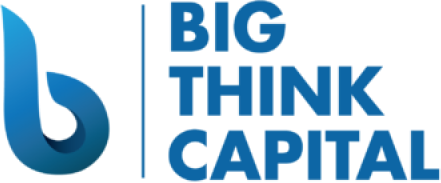Navigating the Less-Obvious Costs of Equipment Financing and How to Strategically Leverage MCAs to Offset These Expenses
Estimated Reading Time: 7 minutes
- Understand hidden costs associated with equipment financing to make informed decisions.
- Consider merchant cash advances (MCAs) as a flexible funding option.
- Plan for long-term financial implications such as depreciation and maintenance.
- Evaluate alternative funding methods for operational expenses.
- Be proactive in managing cash flow to seize growth opportunities.
Table of Contents
- Understanding Equipment Financing
- Hidden Costs of Equipment Financing
- Leveraging Merchant Cash Advances (MCAs)
- How to Strategically Use MCAs to Offset Equipment Financing Costs
- Practical Takeaways for Business Owners
- Conclusion
- FAQ Section
Understanding Equipment Financing
Before delving into the costs, let’s clarify what equipment financing is. This financing option allows businesses to purchase or lease equipment, with the costs primarily being repaid over time, often with interest. It can be useful for acquiring machinery, vehicles, or IT systems without the full upfront expense.
Types of Equipment Financing:
- Equipment Loans: Business takes a loan to purchase equipment, which serves as collateral.
- Equipment Leases: Businesses pay for using equipment for a specific period without owning it.
- SBA Equipment Financing: Loans backed by the Small Business Administration, often offering lower interest rates.
Hidden Costs of Equipment Financing
- Interest Rates and Fees:
- Origination Fees: Charged for processing the loan.
- Documentation Fees: Costs associated with paperwork and legalities.
- Late Payment Fees: Additional charges if payments are not made on time.
- Insurance Requirements:
- Businesses may be required to carry insurance on financed equipment.
- This could include equipment insurance and liability coverage.
- Depreciation:
Most equipment loses value over time, affecting asset value and financing agreements.
- Maintenance and Upgrade Costs:
- Regular servicing costs.
- The need for newer models or technology to remain competitive.
- Opportunity Costs:
Funds tied up in equipment financing could otherwise be used for operational expenses or growth investments.
Leveraging Merchant Cash Advances (MCAs)
Given the less-visible expenses tied to equipment financing, strategic funding sources become essential. One option is a merchant cash advance (MCA). This type of funding is designed for businesses that have short-term capital needs.
Understanding MCAs
An MCA is a financial agreement where a lender provides a cash advance against future credit card sales or receivables. Businesses repay the advance plus a fee via a percentage of their daily credit card sales.
Benefits of an MCA:
- Quick access to funds: Businesses can receive funds in as little as 24 hours.
- Flexible repayment: Payments are based on daily sales, making it easier to manage cash flow.
- No collateral required: MCA is based on future sales, eliminating the need for physical asset collateral.
How to Strategically Use MCAs to Offset Equipment Financing Costs
Integrating MCAs into your financial strategy can alleviate the burden of equipment financing. Here’s how:
- Covering Hidden Costs:
The immediate cash flow from an MCA can help you cover hidden fees and insurance costs associated with equipment financing, helping ensure that your equipment investment does not strain your budget.
- Managing Equipment Maintenance:
Use MCA funds to set aside a maintenance fund, covering ongoing repair expenses and minimizing downtime.
- Seizing Growth Opportunities:
By utilizing an MCA, you free up your operating capital, allowing you to invest in marketing, staff training, or expanding product offerings.
- Preparedness for Economic Fluctuations:
MCAs can provide a financial cushion against unforeseen expenses or market shifts.
Practical Takeaways for Business Owners
- Do Your Homework: Analyze all potential costs before committing to any equipment financing. Consider total repayment amounts, including hidden fees and insurance.
- Evaluate Alternative Funding Methods: If cash flow is a concern, consider using MCAs to cover costs associated with equipment financing and other operational expenses.
- Plan for the Long Term: Understanding equipment depreciation can inform your financial strategies.
Conclusion
Navigating the world of equipment financing requires diligence and an understanding of the potential hidden costs. By considering all financial implications and leveraging tools like MCAs, business owners can strategically manage their funding needs and minimize expenses. Big Think Capital is here to help you explore your financing options and develop a customized financial strategy that supports your business growth.
For more information on how we can help you secure the best funding solutions tailored to your needs, visit bigthinkcapital.com or speak with one of our funding experts today. Your business’s financial health is our priority, and we are committed to helping you succeed.
FAQ Section
What are the main types of equipment financing?
Equipment financing typically includes equipment loans, equipment leases, and SBA equipment financing.
What hidden costs should I be aware of when financing equipment?
Hidden costs can include interest rates, fees, insurance requirements, maintenance, and depreciation.
How can I leverage MCAs for my business?
MCAs can provide quick access to funds, flexible repayment options, and no collateral requirements to help manage ongoing or unexpected costs.
Are MCAs good for long-term financing?
MCAs are typically better suited for short-term funding needs rather than long-term financing.
Should I always choose the lowest interest rate for equipment financing?
Not necessarily; consider all potential costs, including fees and insurance, when evaluating financing options.






